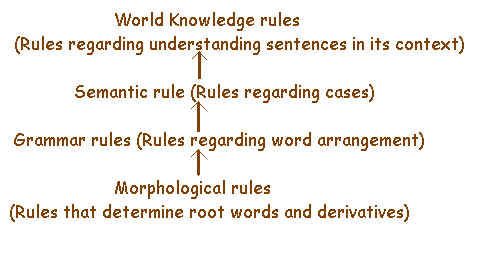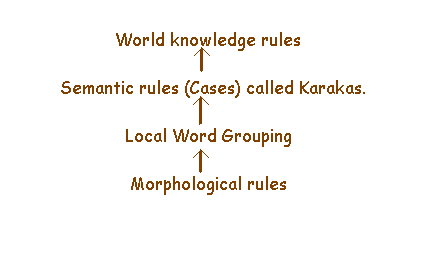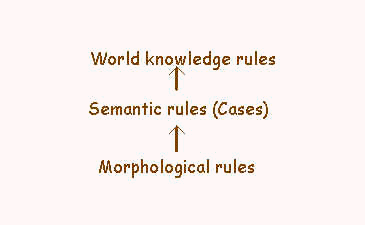 |
||
Levels in language understanding
You must now have understood that while the order of word arrangements is determined by the grammar rules, the meaning of the sentence in general is determined by the case relation connecting different phrases to the verb. So we can look at levels in language understanding with respect to English.
 |
||
Indian Languages
Now let us move on to Indian languages. First we will look at Hindi and then at Tamil. Consider a sentence in Hindi :
ram: n:ð rav:N: k:ð m:ara
This sentence can also be written as
rav:N: k:ð ram: n:ð m:ara
Now looking at the two sentences, we see that the meaning remains the same. Notice that there is a local word grouping where the noun ram: is shifted along with the n:ð, similarly rav:N: with k:ð. This is because, for ram: to be the agent, it is generally followed by a n:ð while a noun filling the role of an object is usually followed by a k:ð. This means that the Hindi language is a relatively free word order language, in contrast to English, which is a fixed word order language. This means that in Hindi, the grammar rules regarding word order in the sentence are more or less replaced by local word grouping.
Levels in language understanding for Hindi
Now let us look at Tamil. Tamil is a completely free word order language.
ÌpÊR ÌpÎÆwÒ uÁpRÑpRLevels in language understanding for Tamil
